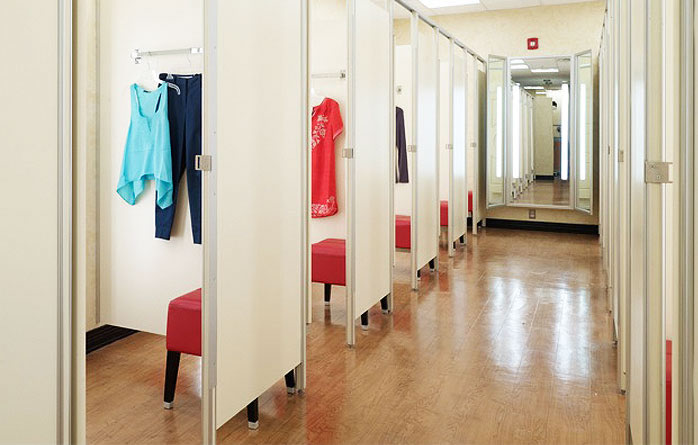When it comes to the retail experience, fitting rooms are often the make-or-break point of a purchase. A shopper can fall in love with a garment on the rack, but if their fitting room experience is uncomfortable, unflattering, or lacking privacy, that love quickly fades. On the other hand, when fitting rooms are designed with care, customers are more likely to buy, return for future visits, and recommend the store to others.
So, what do shoppers really want in a fitting room? Three essentials rise to the top: privacy, comfort, and lighting.
1. Privacy: The Non-Negotiable
Few things frustrate shoppers more than feeling exposed while trying on clothing. Ill-fitting curtains, wide gaps in doors, or poorly designed layouts can make customers self-conscious and eager to leave. True privacy builds trust and allows shoppers to focus on the clothes, not on who might be peeking in.
Best practices for privacy include:
- Solid doors or curtains that close completely with no gaps.
- Thoughtful spacing between fitting rooms to reduce noise and crowding.
- Clear signage that makes it easy for shoppers to know when a room is occupied.
A secure, private fitting room tells customers: You can relax here. You’re valued.
2. Comfort: The Silent Influencer
Comfort goes beyond space—it’s about creating a welcoming environment where shoppers feel good trying on clothes. A cramped, cluttered, or uninviting fitting room sends the message that the store hasn’t thought through the customer journey.
Ways to enhance comfort include:
- Adequate room size for moving, turning, and bringing in multiple items.
- Seating for trying on shoes or for companions.
- Hooks, shelving, or cubbies to organize belongings and clothing.
- Cleanliness maintained consistently throughout the day.
Comfort may not always be the first thing a shopper mentions, but it greatly impacts whether they linger, try on more, and ultimately purchase.
3. Lighting: The Deal Closer
Lighting can completely transform how shoppers see themselves—and the product. Harsh, overhead lighting often casts unflattering shadows that distort fit and color, leading customers to abandon items they might otherwise love. On the other hand, flattering, natural-toned lighting can make clothes shine and boost a shopper’s confidence.
Lighting essentials include:
- Warm, even illumination that mimics natural light.
- Multiple light sources to minimize shadows.
- Adjustable lighting options for different moods or needs.
When shoppers see themselves clearly and positively, they’re far more likely to make a purchase.
The Bottom Line
Fitting rooms are more than just small spaces—they’re an extension of the brand experience. Retailers who prioritize privacy, comfort, and lighting create a setting where customers feel confident, respected, and ready to buy.
Investing in fitting room design isn’t just about aesthetics; it’s about increasing conversion, building loyalty, and showing shoppers that their needs come first.


